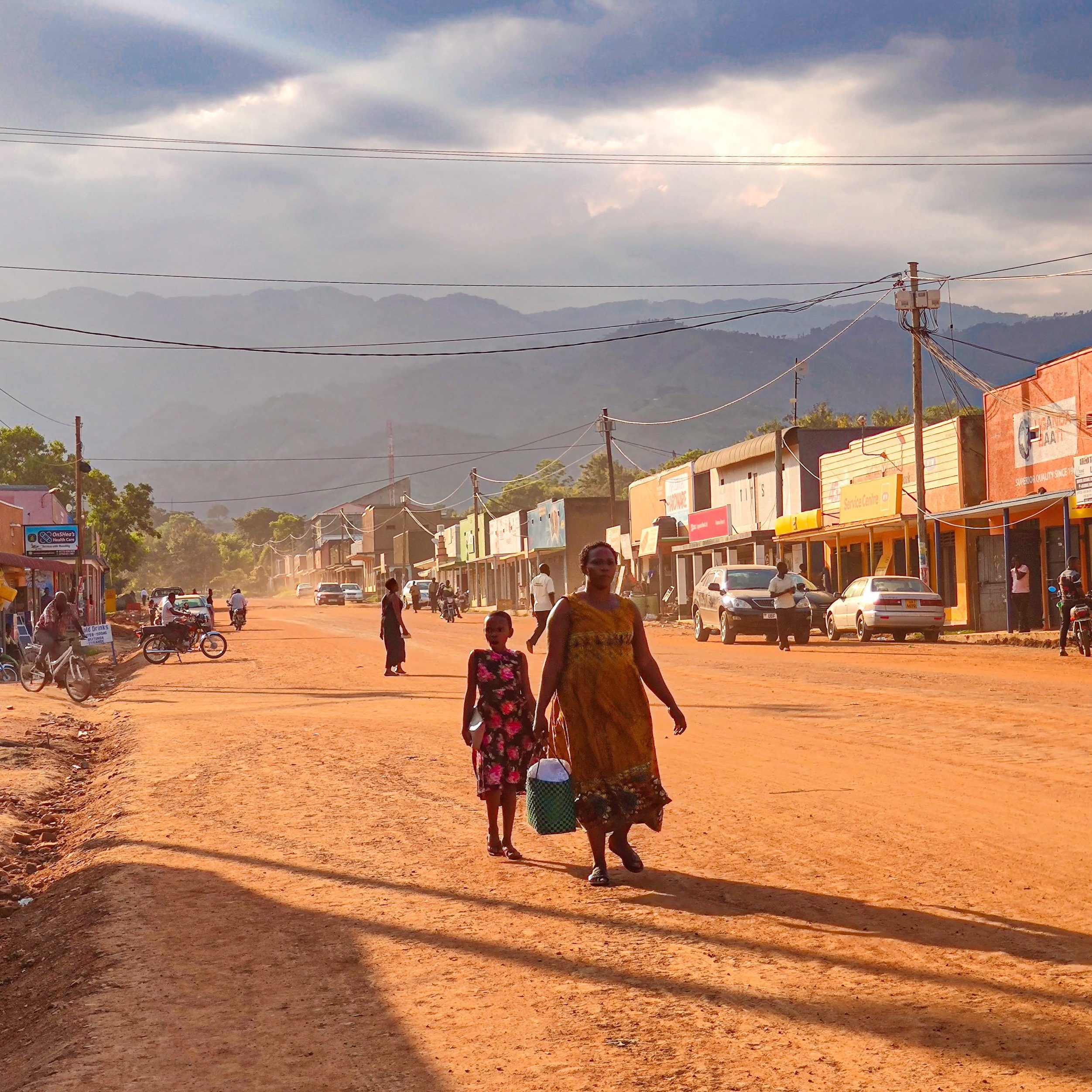

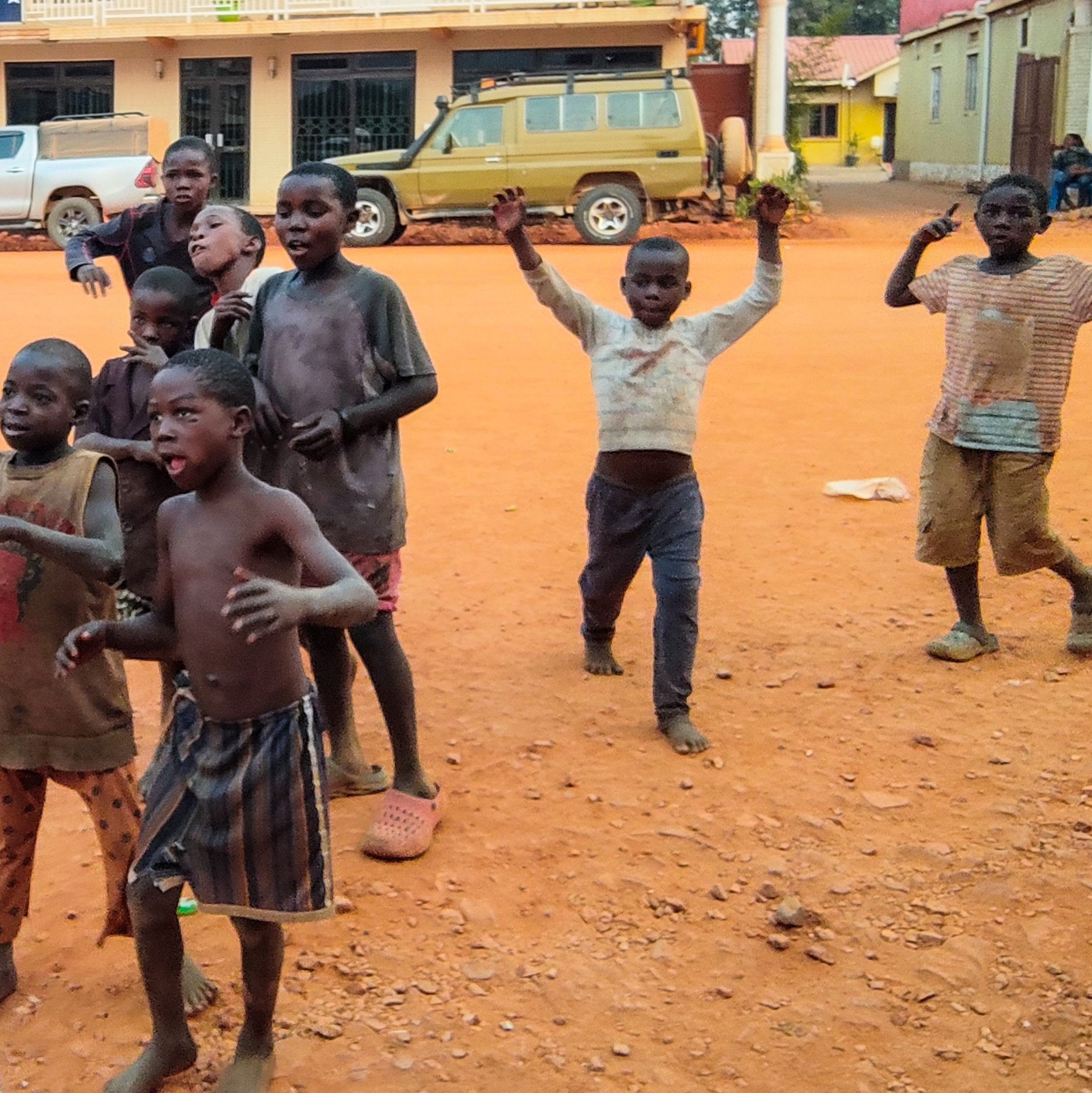
Time to read: 12min.
How did I even get here? Thousands of miles away from what we westerners call the modern world, many kilometers from the closest paved road. Red dirt covered the busy streets outside of my hotel. The cars and motorbikes which passed by with merely seconds separating them, kept continuously whirl up the dust, creating a layer of dense, red fog which was lying over the entire town. Rays of sun which forcefully pierced through the mist, produced dancing patterns on the sandy ground, while simultaneously creating the optical illusion of a red sky.
I was observing the streetlife through a large window from inside my hotel. Passively, I watched sellers and pedestrians walking across the road junction which connected three streets, coming from east, west and south. Suddenly, a group of children drew my attention. They were wearing old, worn out clothes, some had visible scars on their faces and bodies, some were limping. They would walk straight towards people, stretching out their hands, asking for money and food. Not a single person gave something to them, but who would blame anyone, for they had nothing themselves. I watched those kids being yelled at, driven away, or ignored. Every now and then, a soldier mingled with the crowds, carrying an AK47 machine gun.
Kasese District is close to the DR Congo border, my driver told me that terrorist attacks are common, only some years ago, rebels initiated a shooting at the very hotel I was staying. The Ugandan government has therefore increased the presence of soldiers in the area. And in fact, right on the other side of the Rwenzori mountains, in the villages of the North Kivu province, terrorists of the infamous M23, a rebel group which formed on March 23 in DR Congo, hence the name, were meanwhile attacking villages and towns. Occupying everything they could possibly get their hands on.
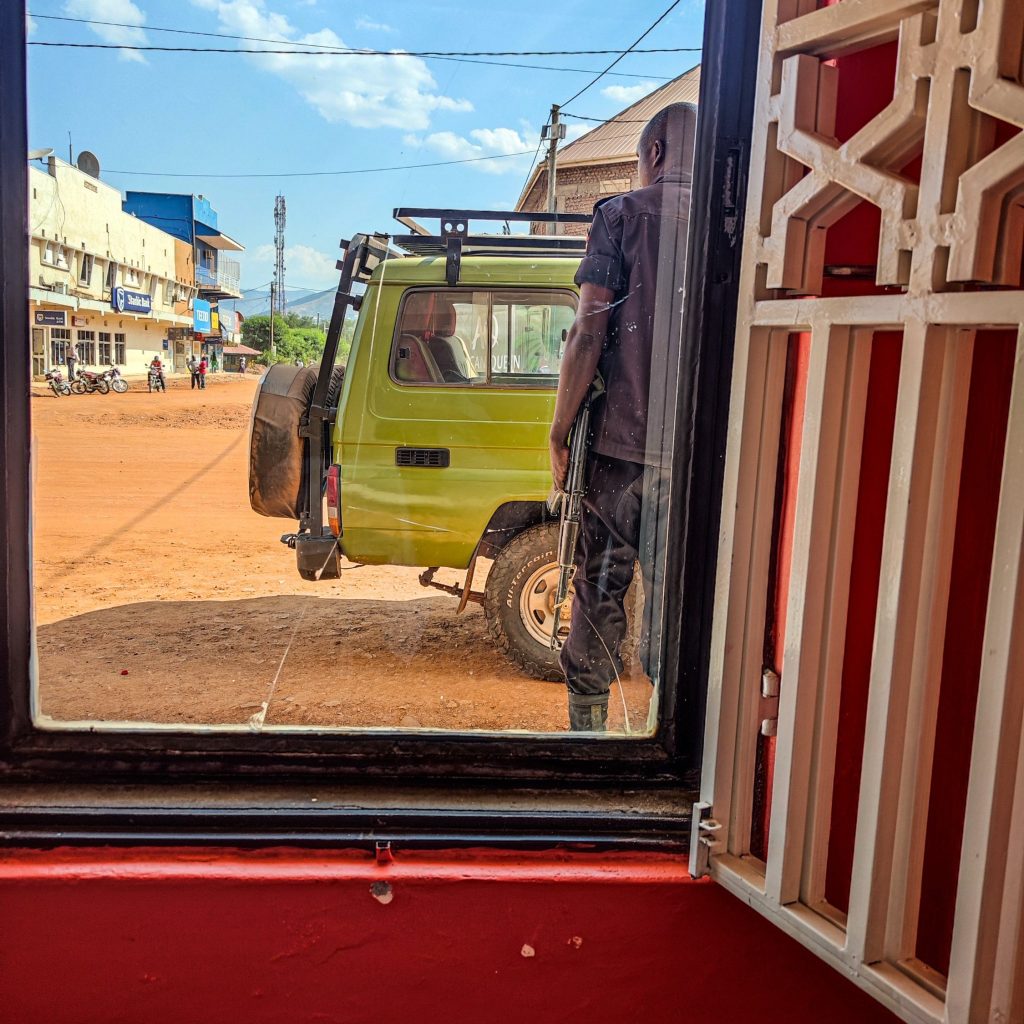
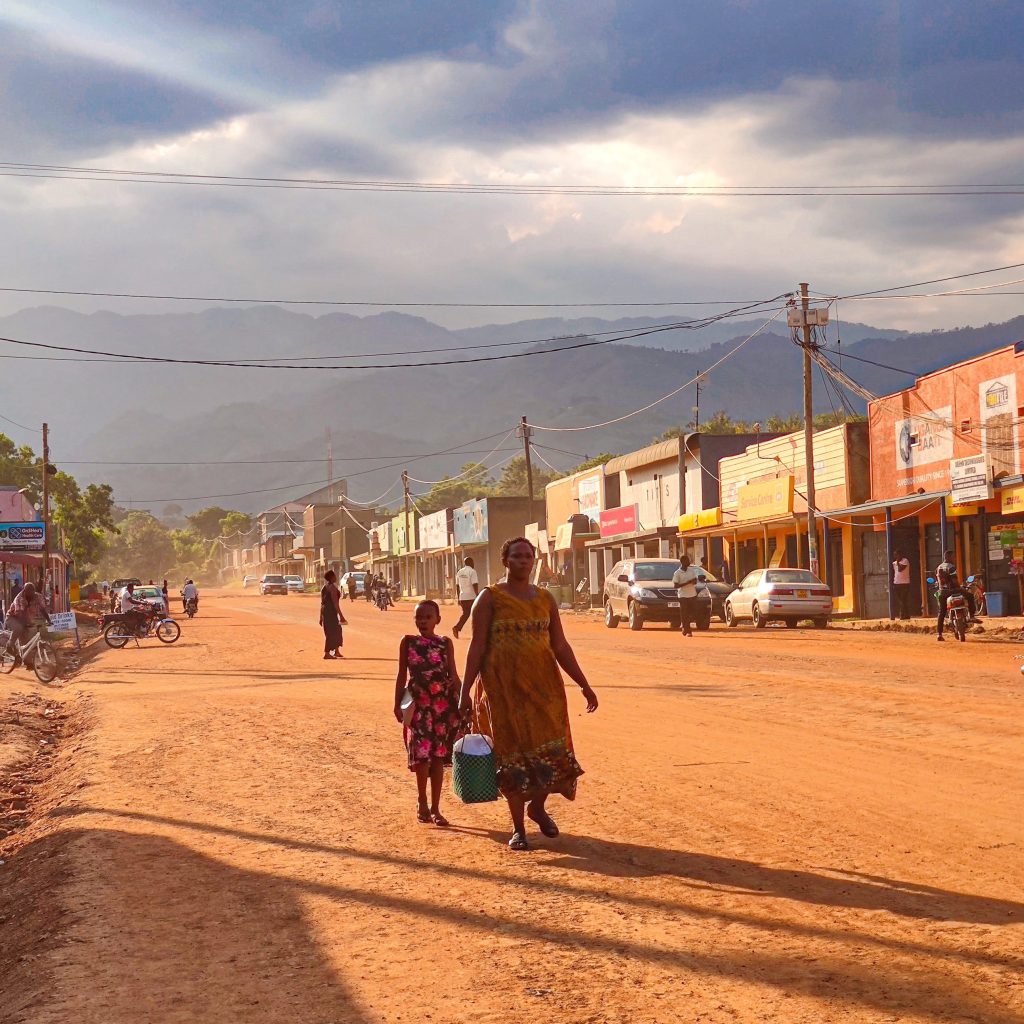
I was about to start an expedition into that remote part of the world, the Rwenzori mountains, aiming to climb Mount Stanley, for Kasese was my base, the starting point of the climb.
I was planning to spend a couple of days in town, getting everything ready for the expedition, meeting with my fellow, local climbers and guides, Jack and Basajja, buying food at the market and organizing the logistics and food supplies together with the porters. The area is so remote, not many people make it that far into the heart of Africa. Kasese district is a multiple days trip away from Ugandas capital Kampala by car. Because the good weather window was short, I decided to fly there in order not to waste any more time. The flight was equally adventurous, travelling on a small bush plane, being the only passenger.
I couldn’t stay long in the hotels restaurant. The role of a passive observer didn’t align with my urge to explore and soon I felt a strong longing to see more of Kasese town, I was yet to learn that I was just about to enter some of the roughest areas I’ve been to so far. With a childlike sense of adventure and exploration, I asked the armed soldier who was watching the hotels entrance, to open the door so I could leave into the unknown. He unlocked it without hesitation. I stepped outside, slowly setting one foot onto the hotels white marble terrasse, which apparently had changed its color to a reddish shade since it was lastly cleaned. The red dust was everywhere, it filled the air, covered vehicles and houses along the main road.
The terrasse of the hotel was a bit elevated, about 1,5m above the road. For some reason there weren’t any stairs, I had to jump to get out of the safety net of comfort, stepping into that other world, which is a reality for so many. A leap of faith. I took a deep breath, almost coughing from the air pollution and jumped. The jump put me right in the middle of some crazy traffic. Cars, bikes, bicycles, pedestrians, approaching from any direction. All of them appeared to meet and mingle at the junction. Hand painted traffic signs feigned the existence of traffic rules, yet no one was paying attention to them.
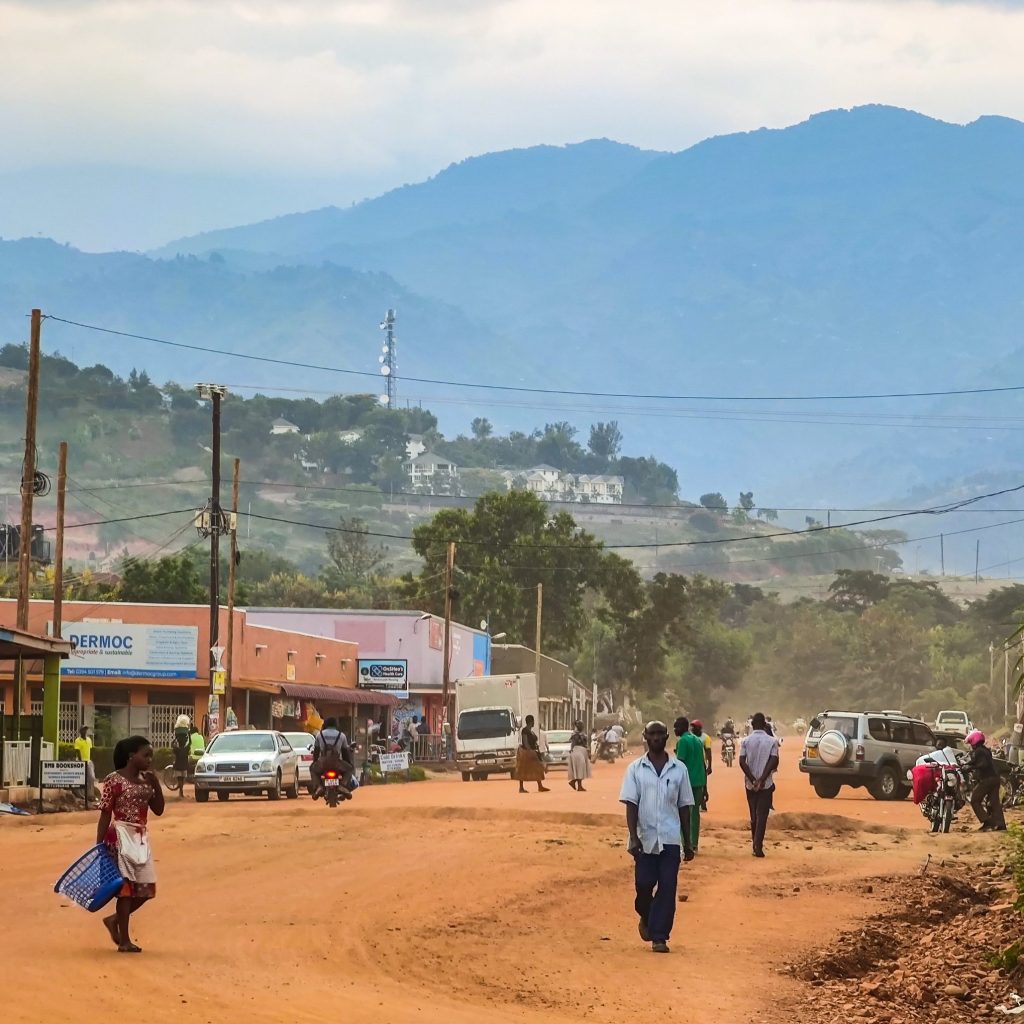

I tried to get to the other side of the road in order to follow it further towards the city center. It was like finding the way through a maze of moving vehicles and crowds. Somehow I managed to run there, taking a break on the dusty stairs in front of a small grocery store. Another soldier walked by closely, holding his machine gun with his left hand tightly pressed against his shoulder. His camouflage uniform also had turned into some reddish hue. He didn’t appear to pay much attention to the crazy traffic. In general, everyone seemed to be very much used to it.
On the broken walls of the building behind me were some advertising posters of a concert displayed, a local singer would perform at the town hall in a few days. The ads were all over the place, on poles, wooden fences, shop doors.
I followed the road, carefully on the very left side, heading straight towards the market place. I used my phone to check my location on Google maps, took a few shortcuts by turning into smaller side streets, also to get away from the traffic. Those side streets were a world of their own. People were driving livestock, goats and chicken, from one building to the other, plastic and garbage was everywhere, scattered on the sides of the narrow streets which were framed by either buildings or walls of clay.
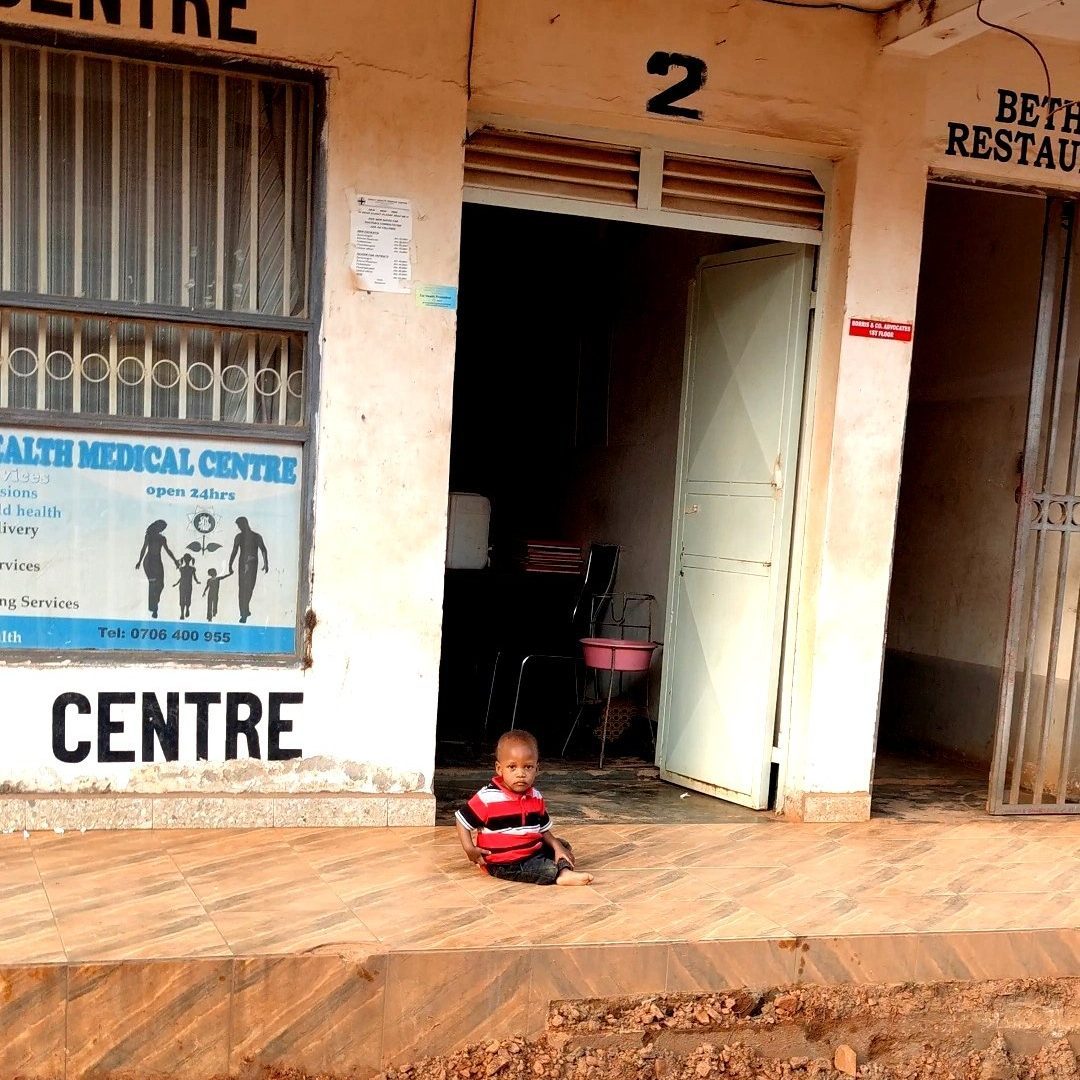
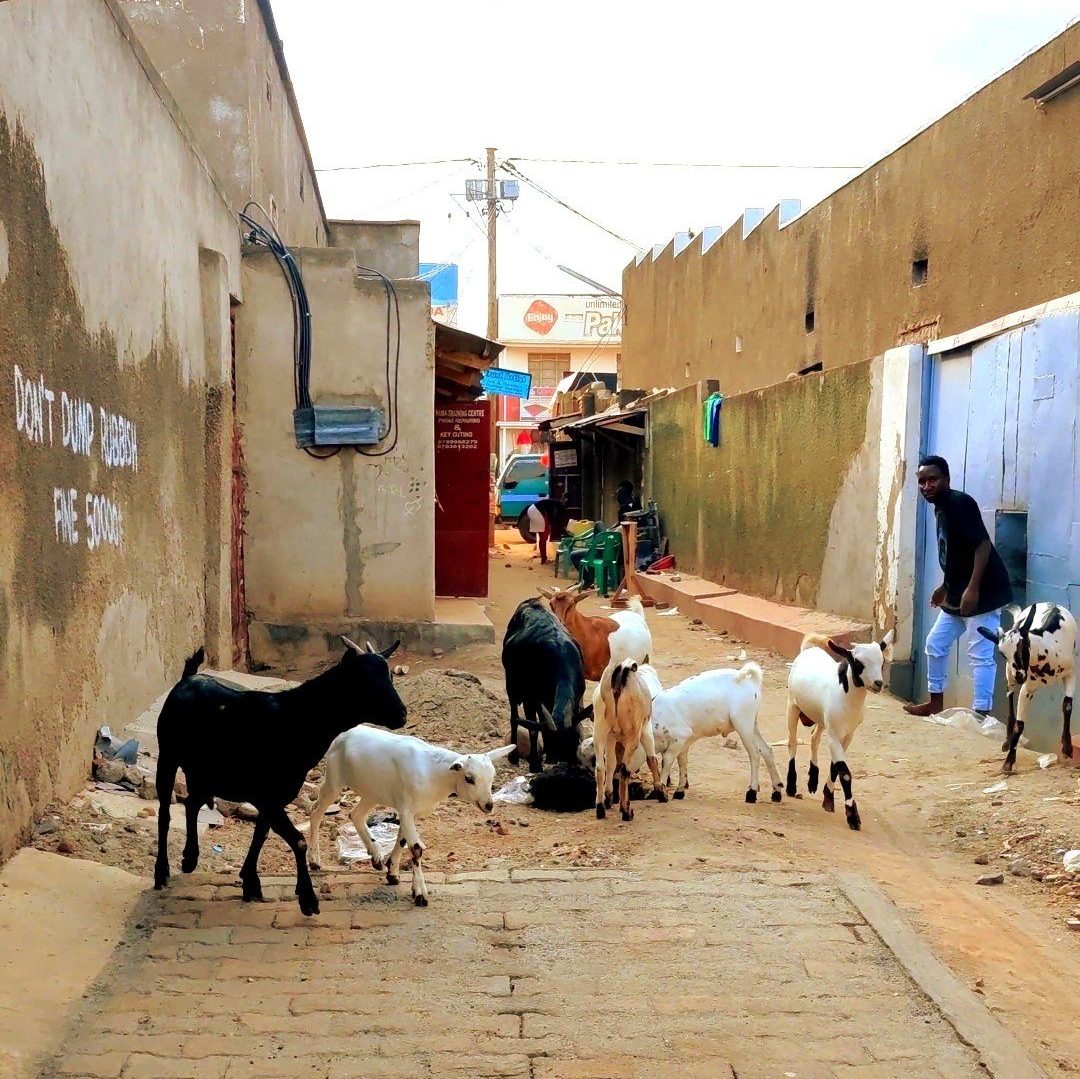
Getting closer to the market, I noticed some families sitting on the left side of the road, selling charcoal. Their hands and clothes were covered in grey dust, only interrupted by some small red stains of sand. I moved on, straight to the market. It was a busy place. Sellers were trying to find customers to buy beef, apparently slaughtered only hours before. They had it displayed right in front of their shops.
A man was cutting a large fish of a species I have never seen before with a bloody machete on an even bloodier wooden table. He had just risen his machete up into the air again, ready to cut another piece of fish with a forceful strike, when he saw me and suddenly stopped. I came closer, he looked at me and asked if I wanted some of the fish, I declined. Behind him an entire new part of the market became visible. I couldn’t see it earlier because of some wooden shacks which blocked the view.
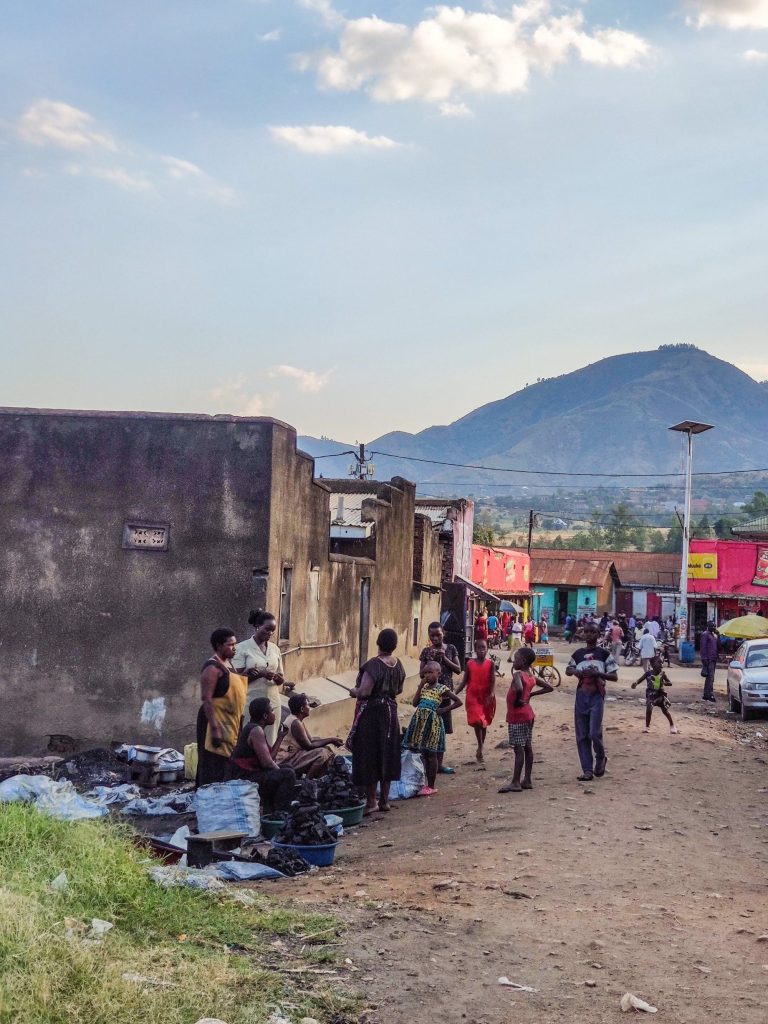

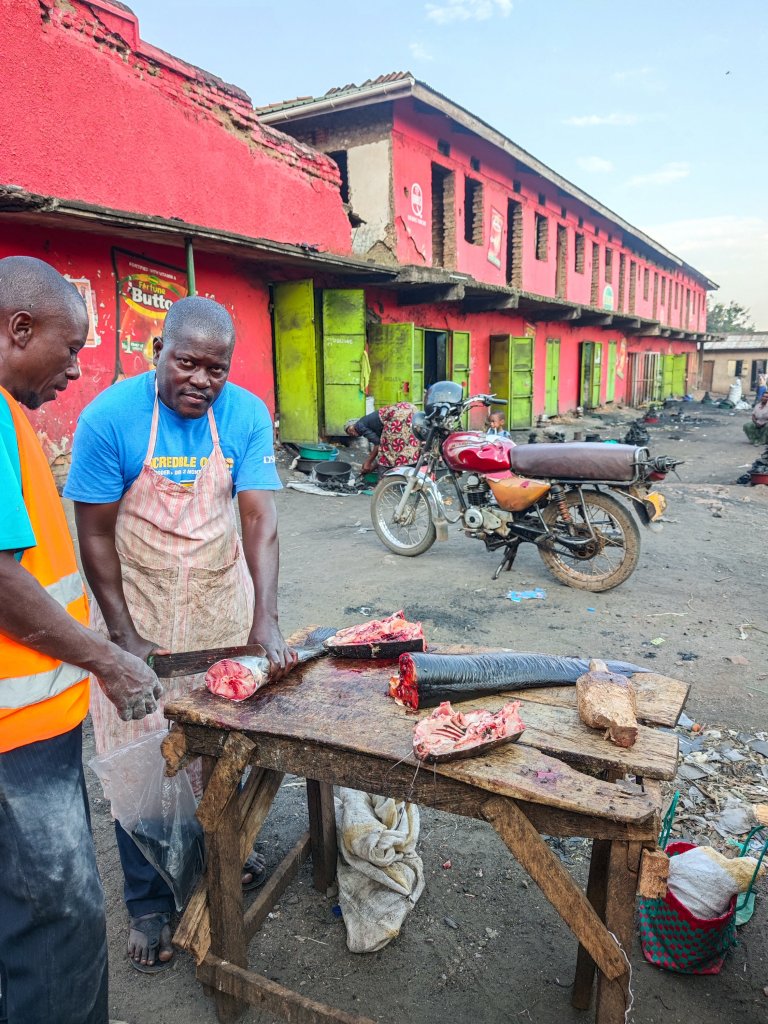

So many people were trying to sell charcoal. No words can describe the scenery. The roughest area I’ve ever seen. They had the grey pieces of coil displayed in front of some wooden containers, they apparently lived in. The coal dust was all over the place, the ground, the wooden shacks, even their clothes and visible skin parts were covered in a grey layer of dust. The red hues of the sandy roads were gone, no colors. A grey, monochromic image. I turned around the corner, into a less busy street. A women was holding a child, it had some injuries. Even there, fine charcoal dust polluted the air. I still had some chocolate in my pocket, I always bring sweets because I get dizzy easily. It’s my safety supply to rise my blood sugar, but I’m not sure whether it actually works or if it’s rather some kind of a mental support though. When I saw the little child, I was glad I brought those sweets, I gave him all I had. His mother genuinely thanked me. I answered with a nod and moved on.
The houses in that particular side road were more like cubes of clay, broken or no roofs, no windows or doors, no furniture, only mattresses, scattered on the floor, people lying next to each other. Sometimes up tp 10 in one single room. When I travelled to Kilimanjaro about a year ago, my guide told me about similar conditions in Moshi, a town at the base of the mountain. Most of the people live like that in Africa, it is very common.
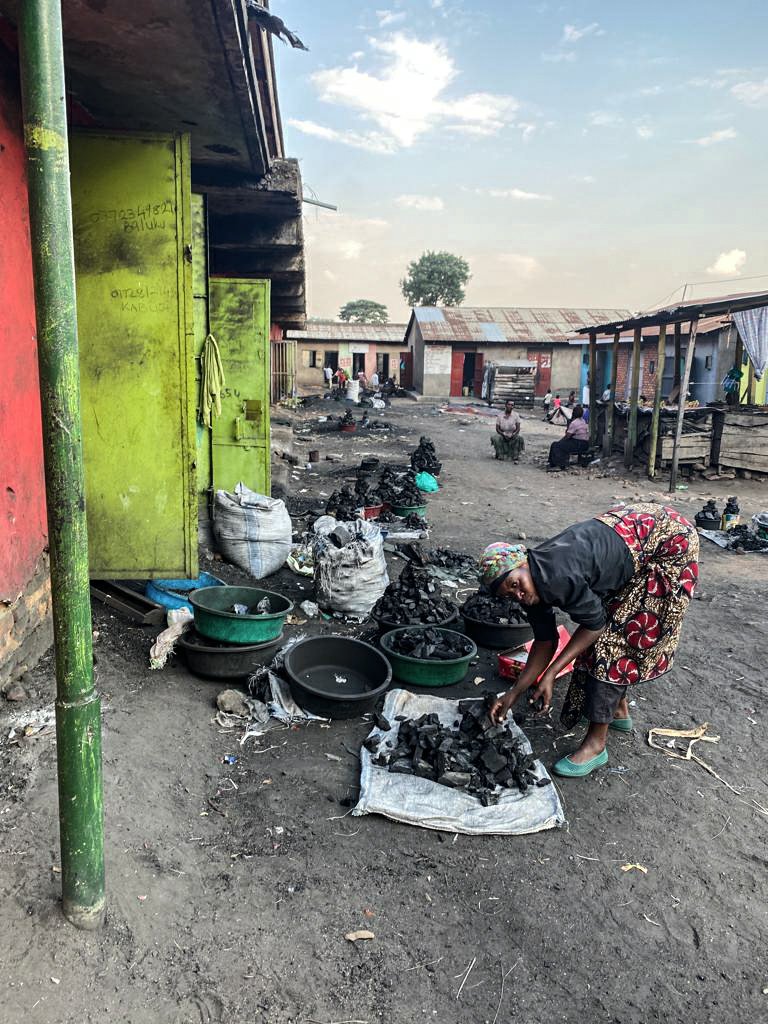



I’m glad I came here. As westerners, I have to admit, we live in a big bubble. We are used to the safety and comfort of our homes, but that is rather the exception not the rule and creates a false sense of comfort. Visiting places like that, I’m able to provide impressions, which sometimes can be difficult to grasp. In fact, sharing those experiences and images with others, makes people aware, even engages people into helping others. That’s what I’m here for, I whispered to myself.
When I stepped back onto the main road, I found the local school right in front of me. Jack, my friend from Congo, told me that school tuition costs as little as 10 cents per child and year. Yet, many people can’t afford it. On my perspective though, education is one of the most crucial things for those children. Its a way out of poverty, a way out of selling charcoal on the sides of the streets.
A few children were entering the old, red building made out of bricks. They were nicely dressed, some wearing colorful school uniforms, singing local songs. I turned around, looking at the children selling charcoal right behind me. Two colliding worlds so close yet so far apart, physically only separated by a busy side road, yet beyond reach.
I didn’t bring much cash, because I was planning to go to the mountains and had left most of my personal belongings in Entebbe, but I had some Shillings. Remembering Jacks words, I felt like I needed to do something. Therefore I took my phone and translated into Swahili the simple sentence: Use this to go to school. I came up to a little boy, offering him some of the money which would probably pay for his entire school education. He didn’t accept and I didn’t know what to do. But I had an idea, I asked his mother, if I was allowed to take a photo in front of their home, I’d therefore give them some money. She agreed.
Their house was a broken concrete building with big holes in it. They didn’t have any glass windows, wooden window sashes were used instead. A lady was sitting in front of the entrance, preparing lunch, some other kids, intrigued by what was going on outside, were sticking out their heads from behind the equally broken, wooden door. I gave my phone to one of the locals and he took a photo. It was a weird situation, usually I smile on photos, I wasn’t sure what to do with my lips. I distributed the money evenly among the kids’ parents telling them to use it for school tuitions. There’s no guarantee that they would actually use it for education purposes, but they needed it so much, no matter what.

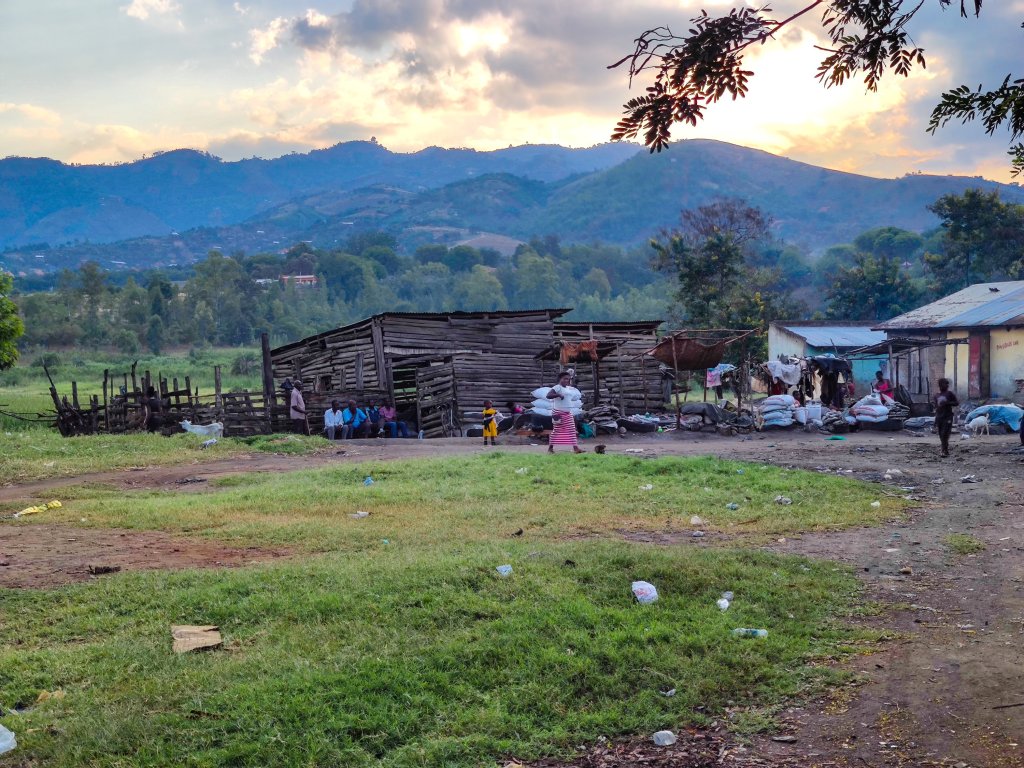
I decided to return to the hotel, for it was getting late. On my way, I saw people trying to sell sandals made out of old tires.
Then, almost back from where I started, the begging children I noticed hours earlier while sitting in my hotels lobby, approached me. All of them, something between the age of 5 and 10 years, were holding up their hands of scars, asking for food. Their clothes were old and dirty, consisting of more holes than fabric, some of the kids had bruises, some had other injuries. Most of them weren’t wearing shoes. The skin on their feet and toes was thick, but chapped, broken from the dry and dusty roads. I gave them a bit of my remaining money, yet they didn’t appear to be very excited about it, the reason for that, I found out later when asking my friend, was that apparently those kids are not allowed to enter any of the stores, they couldn’t buy anything with that money and I wasn’t able to talk to their parents either.
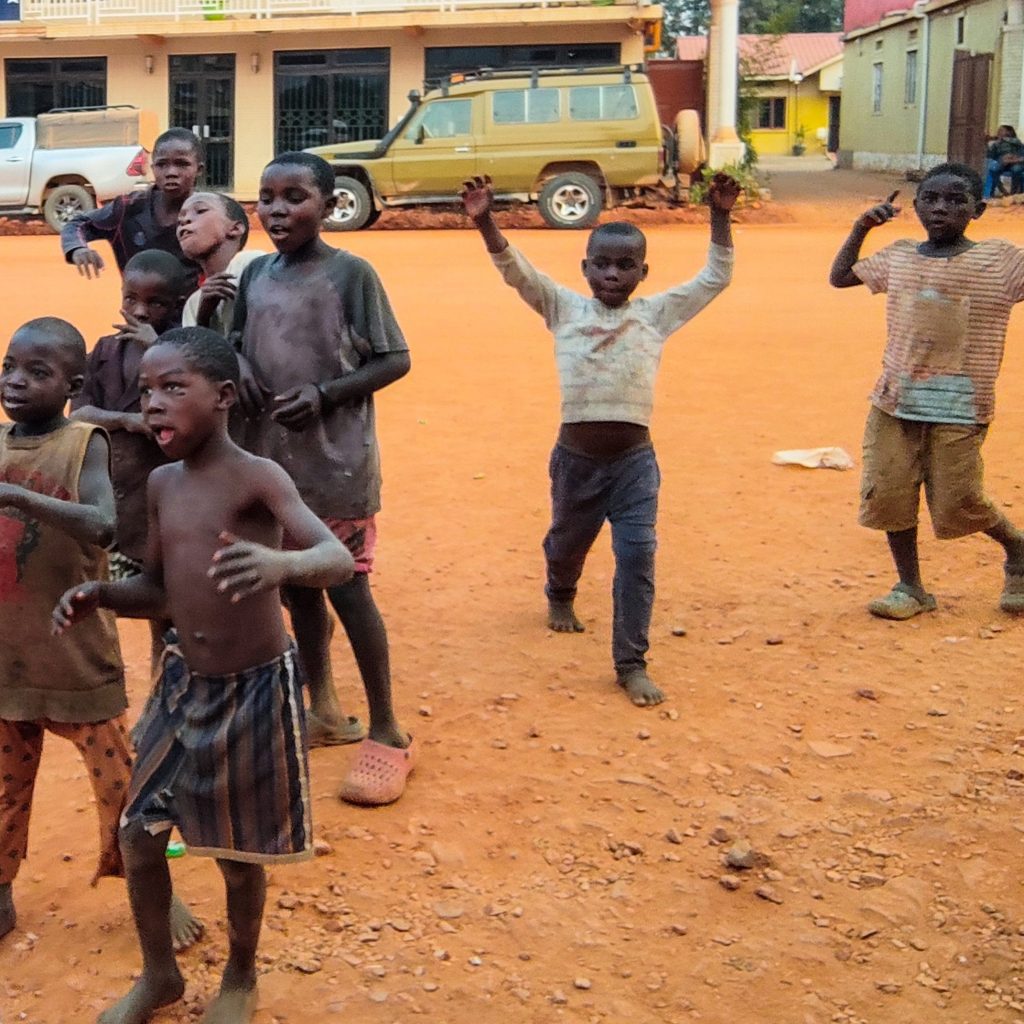
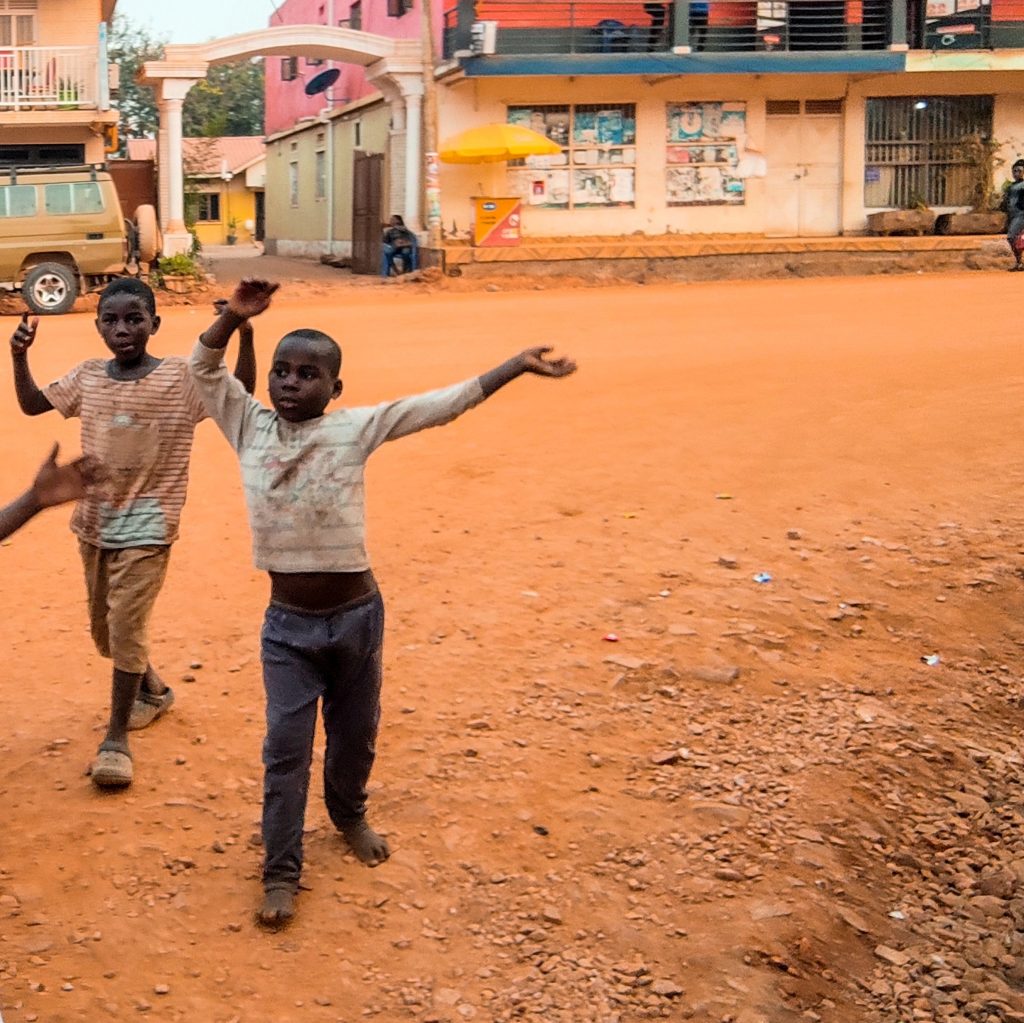
When I realized that they had no use for the money, I walked into the next store and bought all the sweets I could get. When I came back out, immediately, they ran towards me with their hands reaching out and took everything they could. I was standing in between 10 hands, all of them pulling on the little bag I was holding, which contained all the candy, telling me a hundred times Thank You. I notice that the group had split up into two parts, older and younger, hence stronger and weaker kids. While the bigger ones got lots of food, the smaller children only got what was left on the ground during the initial fight for sweets.
I notice a little boy. His body was covered in bruises, even more than the other childrens. He had some visible marks on the skin, his eyes were of a yellow color. He was so tiny, much tinier than all the others. I went back into the store. With my remaining money, I bought two cakes. That’s all they had left. I was hiding one behind my back, the other one, I offered to the taller kids. Again, they took it and ran off. The small children remained there, looking at me. I approached them slowly, and from behind my back I pulled out the cake. The little boy with the skin marks couldn’t believe it, he smile at me for a second, yet hesitated to take the cake. I told him, its for you. Share it with your friends! I’m not sure if he could understand what I was saying because he was still hesitating, then he took it. In the very same moment another young boy approached, he was carrying a garbage bag. They both ran off and while running, they put the cake into the garbage bag, in order to hide it, so no one would take it from them.


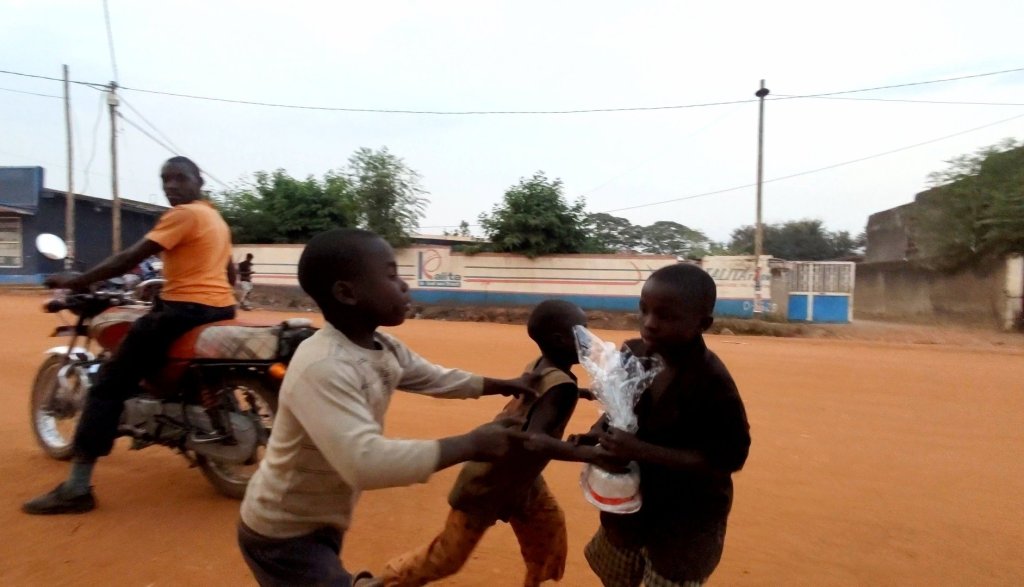
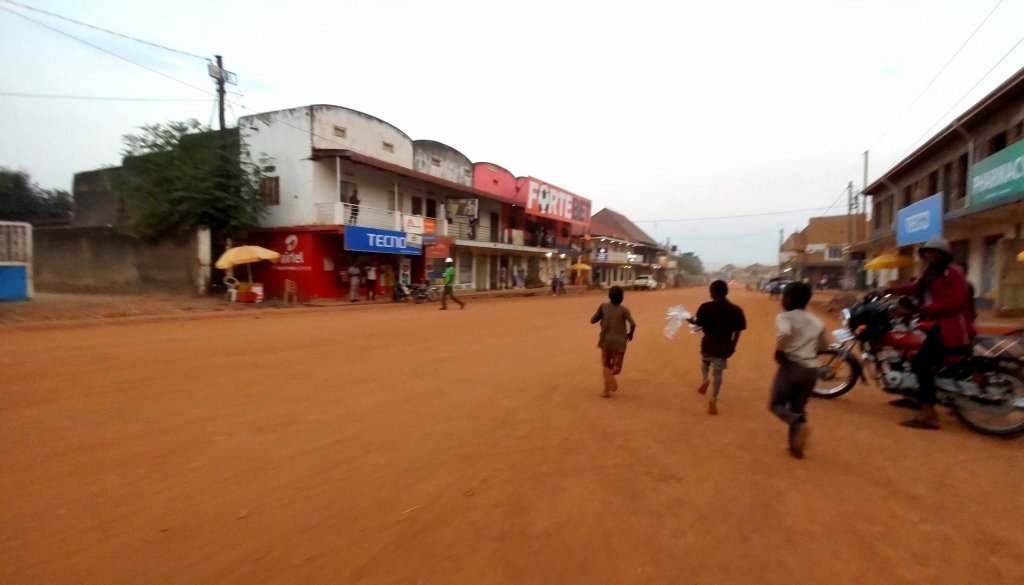
I returned to the hotel.
The next day, my expedition to the remote Rwenzori mountains began, far away from Kasese town.
I never saw those kids again, but I hope I was able to brighten their day a little bit.
If you liked the story, please share it with your friends and family and subscribe to my blog to receive updates.
Leave a comment